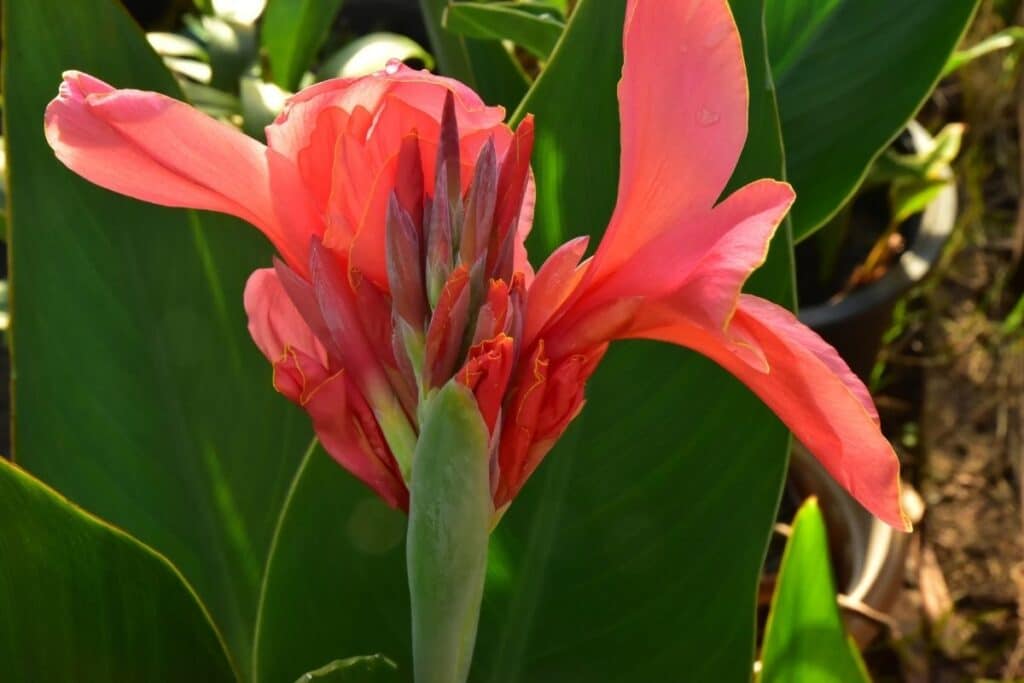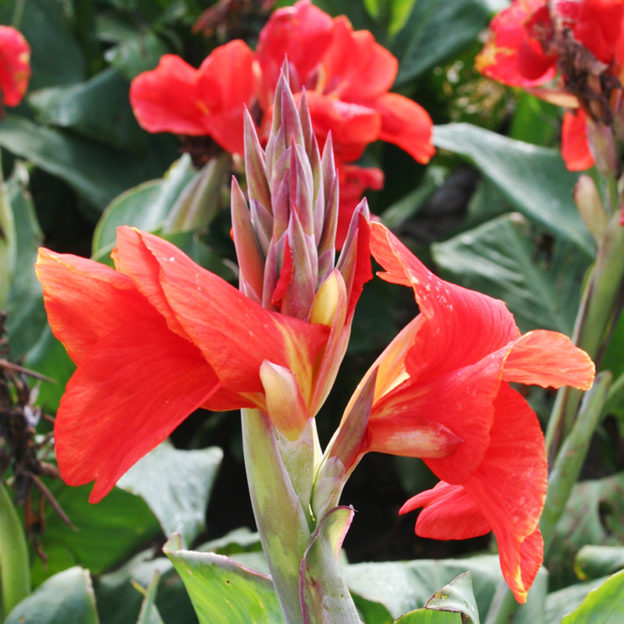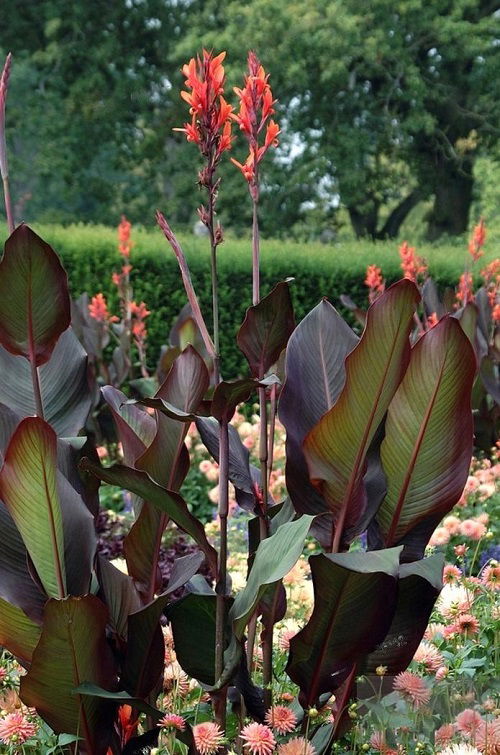Understanding the Basics of Canna Lily Growth
Canna lilies are a popular choice among gardeners due to their vibrant flowers and ability to thrive in a variety of environments. However, to maximize their growth potential, it’s essential to understand the factors that influence their height. Canna lilies can grow to varying heights, ranging from 2 to 6 feet or more, depending on the specific variety and growing conditions. When considering how tall do canna lilies grow, it’s crucial to take into account the impact of light, water, and soil quality on their development.
Light exposure plays a significant role in canna lily growth, with most varieties requiring full sun to partial shade. Insufficient light can lead to stunted growth and reduced flowering, while excessive light can cause scorching and damage to the leaves. Watering habits also significantly impact canna lily growth, as these plants prefer moist soil but can be susceptible to root rot if the soil is too wet. Soil quality is another critical factor, as canna lilies thrive in well-draining soil with a pH between 6.0 and 7.0.
In this article, we will delve into the specifics of canna lily growth, exploring the factors that influence their height and providing guidance on how to optimize growing conditions for maximum growth. Whether you’re a seasoned gardener or just starting out, understanding the basics of canna lily growth is essential for helping these beautiful plants reach their full potential.
Factors Affecting Canna Lily Height: A Deep Dive
When it comes to understanding how tall do canna lilies grow, it’s essential to consider the various factors that impact their height. Temperature, humidity, and fertilization are three critical elements that can significantly influence canna lily growth. By optimizing these factors, gardeners can promote healthy growth and maximize the height of their canna lilies.
Temperature plays a crucial role in canna lily growth, with most varieties thriving in temperatures between 65°F and 95°F (18°C and 35°C). Temperatures above 100°F (38°C) can cause stress, while temperatures below 55°F (13°C) can slow down growth. Humidity is another essential factor, as canna lilies prefer a relatively high humidity of 50-70%. Fertilization is also vital, as canna lilies require a balanced diet of nutrients to promote healthy growth.
By understanding the impact of temperature, humidity, and fertilization on canna lily growth, gardeners can take steps to optimize these factors and promote maximum height. For example, providing shade during the hottest part of the day can help prevent stress, while using a humidifier can maintain optimal humidity levels. Fertilizing regularly with a balanced fertilizer can also provide the necessary nutrients for healthy growth.
In addition to these factors, other elements such as soil quality, light exposure, and pruning techniques can also impact canna lily growth. By considering these factors and taking steps to optimize them, gardeners can help their canna lilies reach their full growth potential and maximize their height.
How to Choose the Right Canna Lily Variety for Your Garden
With over 50 species of canna lilies to choose from, selecting the right variety for your garden can be a daunting task. However, by considering factors such as climate, soil type, and desired height, you can choose a variety that will thrive in your garden and help you achieve your goal of understanding how tall do canna lilies grow.
Dwarf varieties, such as ‘Tropicanna’ and ‘Red King Humbert’, are ideal for small gardens or containers and can grow to be around 2-3 feet tall. These varieties are perfect for adding a pop of color to your garden without taking up too much space. On the other hand, giant varieties, such as ‘Canna x generalis’ and ‘Canna ‘Musifolia”, can grow to be over 6 feet tall and are perfect for making a statement in your garden.
In addition to considering the height of the variety, it’s also important to think about the climate and soil type in your garden. Some varieties, such as ‘Canna ‘Indica” and ‘Canna ‘Flaccida”, are more tolerant of cooler temperatures and can thrive in gardens with partial shade. Others, such as ‘Canna ‘Australis” and ‘Canna ‘Glauca”, prefer warmer temperatures and full sun.
By choosing the right variety of canna lily for your garden, you can set yourself up for success and help your plants reach their full growth potential. Whether you’re looking for a compact variety for a small space or a giant variety to make a statement, there’s a canna lily variety out there for you.
Optimizing Growing Conditions for Maximum Height
To maximize the growth potential of your canna lilies, it’s essential to create the ideal growing conditions. This includes preparing the soil, establishing a watering schedule, and pruning the plants regularly. By optimizing these factors, you can help your canna lilies grow to their full height and thrive in your garden.
Soil preparation is critical for canna lily growth. These plants prefer well-draining soil that is rich in organic matter. To create the ideal soil conditions, mix in a 2-inch layer of compost or well-rotted manure into the soil before planting. This will help to improve the soil’s structure and fertility, allowing your canna lilies to grow to their full potential.
Watering is also crucial for canna lily growth. These plants prefer moist soil, but can be susceptible to root rot if the soil is too wet. To avoid this, establish a regular watering schedule that provides about 1-2 inches of water per week. This can be achieved through a combination of rainfall and irrigation.
Pruning is another essential aspect of canna lily care. By pruning your plants regularly, you can help to promote healthy growth and maximize their height. Remove any dead or damaged leaves or stems, and cut back the plant to about 6-8 inches from the ground after it finishes blooming. This will help to encourage new growth and promote a bushy, compact shape.
Finally, providing support for tall varieties is essential to help them grow to their full height. Use stakes or a trellis to provide support for the plant, and tie the stems to the support using twine or a clip. This will help to keep the plant upright and promote healthy growth.
Common Mistakes to Avoid When Growing Canna Lilies
While canna lilies are relatively easy to grow, there are several common mistakes that can limit their growth and prevent them from reaching their full potential. By avoiding these mistakes, you can help your canna lilies grow tall and thrive in your garden.
One of the most common mistakes is over-watering. Canna lilies prefer moist soil, but too much water can lead to root rot and other problems. To avoid this, make sure to check the soil regularly and only water when it feels dry to the touch. Another mistake is under-fertilizing. Canna lilies need regular fertilization to promote healthy growth and maximize their height. Use a balanced fertilizer and follow the instructions on the label for best results.
Inadequate sunlight is another common mistake that can limit canna lily growth. Canna lilies need full sun to partial shade to grow well, so make sure to plant them in a location that receives plenty of sunlight. Finally, failing to provide support for tall varieties can also limit their growth. Use stakes or a trellis to provide support and keep the plant upright.
By avoiding these common mistakes, you can help your canna lilies grow tall and thrive in your garden. Remember to provide optimal growing conditions, proper care, and regular maintenance to help your canna lilies reach their full growth potential and answer the question of how tall do canna lilies grow.
Pruning and Training Canna Lilies for Maximum Height
Pruning and training are essential techniques for promoting healthy growth and maximizing the height of canna lilies. By pruning your canna lilies regularly, you can encourage bushy growth, promote more blooms, and help the plant reach its full potential. Training your canna lilies to grow up a trellis or stake can also help to maximize their height and create a stunning display in your garden.
To prune your canna lilies, start by removing any dead or damaged leaves or stems. This will help to prevent the spread of disease and encourage healthy growth. Next, cut back the plant to about 6-8 inches from the ground after it finishes blooming. This will help to promote new growth and encourage the plant to produce more blooms.
To train your canna lilies, start by providing a trellis or stake for the plant to grow up. You can use a bamboo stake or a metal trellis, depending on your preference. Once the plant is established, tie the stems to the trellis or stake using twine or a clip. This will help to support the plant and encourage it to grow upwards.
By pruning and training your canna lilies, you can help them grow tall and thrive in your garden. Remember to provide optimal growing conditions, proper care, and regular maintenance to help your canna lilies reach their full growth potential and answer the question of how tall do canna lilies grow.
Managing Pests and Diseases that Can Impact Canna Lily Growth
Canna lilies are generally hardy plants, but they can be susceptible to pests and diseases that can impact their growth. Aphids, whiteflies, and spider mites are common pests that can infest canna lilies, while fungal infections and root rot can also be problematic. By understanding how to prevent and treat these issues, you can help your canna lilies grow tall and thrive in your garden.
To prevent pests and diseases, make sure to inspect your canna lilies regularly for signs of infestation or infection. Use neem oil or insecticidal soap to control aphids and whiteflies, and treat fungal infections with a fungicide. Also, ensure good air circulation and avoid over-watering, which can help to prevent root rot and other problems.
In addition to these measures, consider using integrated pest management (IPM) techniques to manage pests and diseases. IPM involves using a combination of physical, cultural, biological, and chemical controls to manage pests and diseases. This approach can help to minimize the use of chemical pesticides and maintain a healthy balance in your garden ecosystem.
By taking steps to prevent and manage pests and diseases, you can help your canna lilies grow tall and thrive in your garden. Remember to provide optimal growing conditions, proper care, and regular maintenance to help your canna lilies reach their full growth potential and answer the question of how tall do canna lilies grow.
Conclusion: Maximizing the Growth Potential of Your Canna Lilies
In conclusion, canna lilies are a versatile and beautiful addition to any garden, and with the right care and attention, they can grow tall and thrive. By understanding the factors that influence their growth, selecting the right variety, optimizing growing conditions, and providing proper care and maintenance, you can help your canna lilies reach their full growth potential and answer the question of how tall do canna lilies grow.
Remember, canna lilies are a low-maintenance plant that can thrive in a variety of conditions, but they do require some care and attention to reach their full potential. By following the tips and advice outlined in this article, you can help your canna lilies grow tall and healthy, and enjoy their beautiful blooms all season long.
Whether you’re a seasoned gardener or just starting out, canna lilies are a great choice for adding some color and interest to your garden. With their vibrant blooms and attractive foliage, they’re sure to be a hit with anyone who sees them. So why not give them a try? With the right care and attention, you can help your canna lilies grow tall and thrive, and enjoy their beauty all season long.








